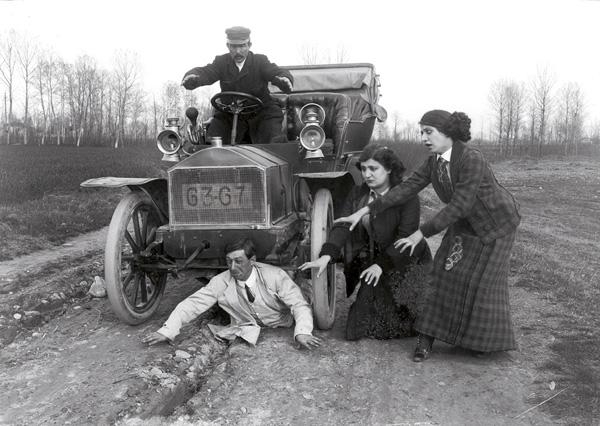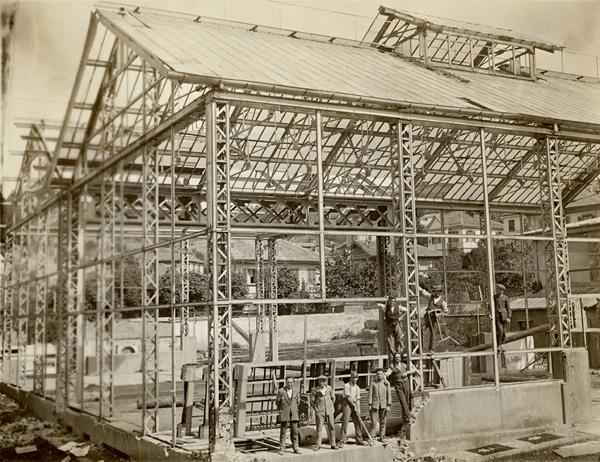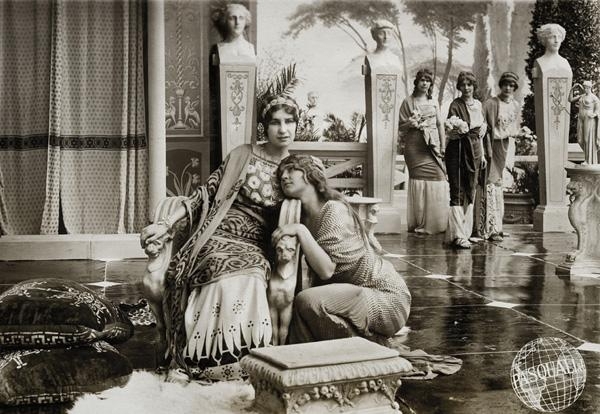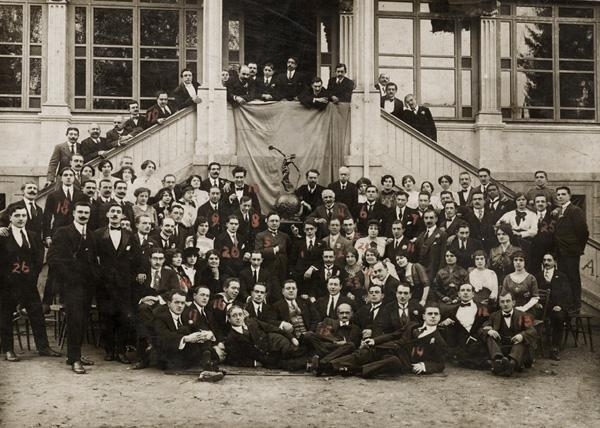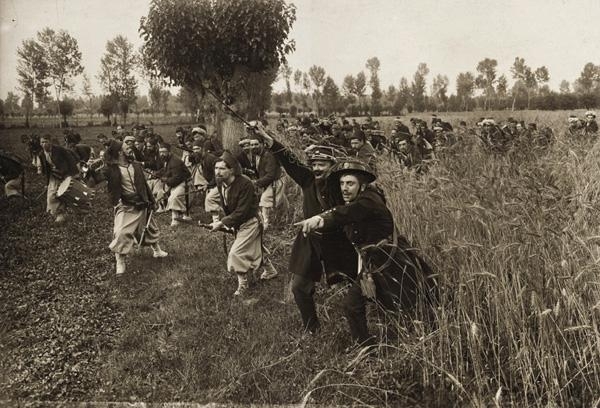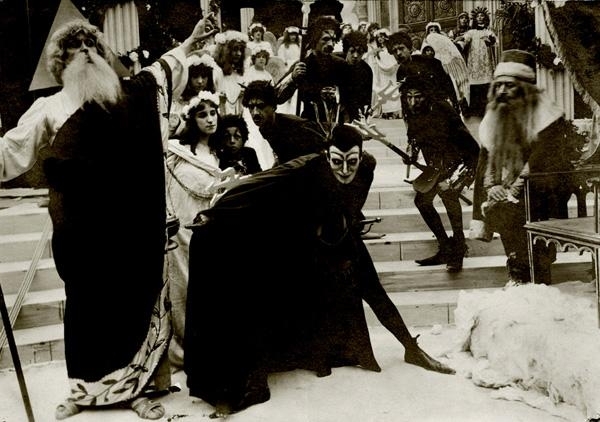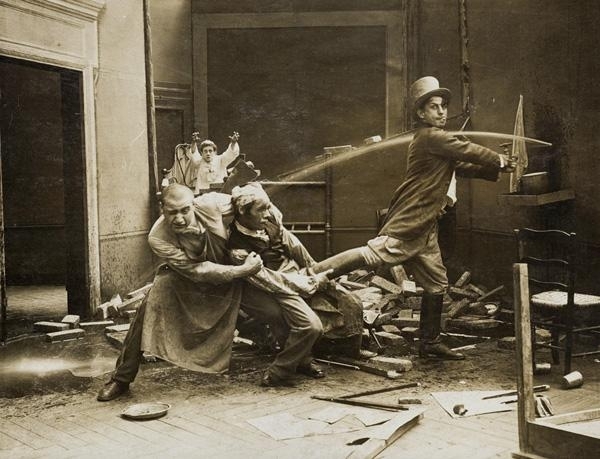
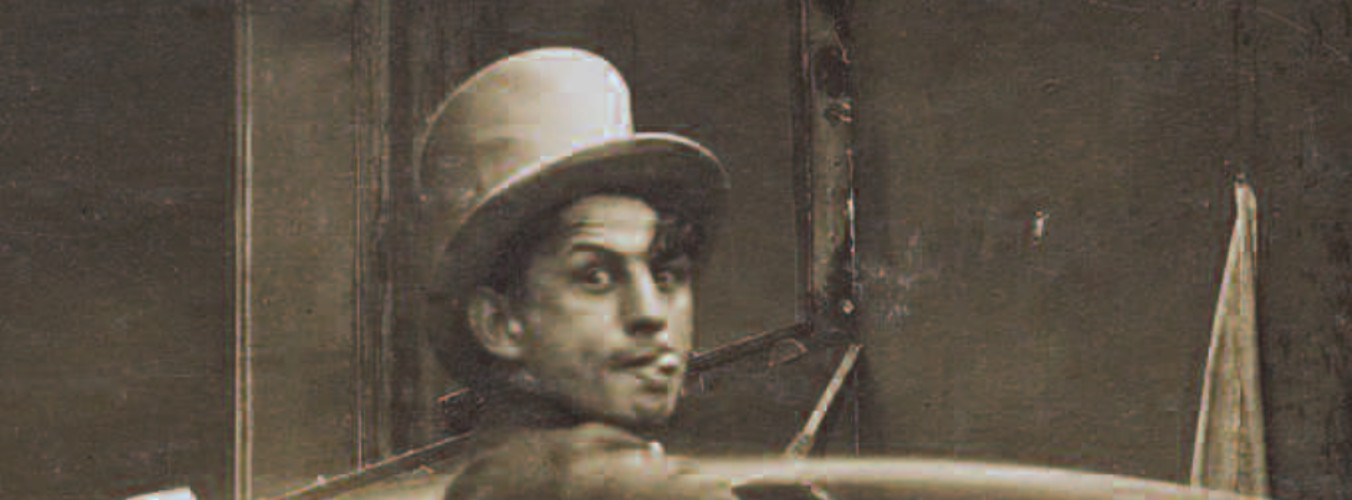
Pictures of Silence. The Adventurous (Hi)story of TurinÂ’s Silent Cinema
This photography exhibit pays tribute to the great season of Torino’s silent films, its directors, actors and crews who contributed their talent to establishing Torino as the capital of Italian cinema in that era. The exhibit is divided into two parts which document the extent of the period’s productions, and, at the same time, the wealth of the photographic collection conserved at the National Cinema Museum. On the Mole Antonelliana’s outside railings a first group of pictures documents the activities on the sets, offering valuable information on the work behind the scenes of silent films and their mise-en-scène. In addition to the cast, the camera photographs the area of the sets, for the most part inside studios, revealing architectural components, painted backdrops, equipment and the crew. Other snapshots depict directors, actors and the crew taken during a coffee break or in more formal poses, in front of the film studios.
Along the internal ramp of the Mole Antonelliana, which looks over the spectacular Temple Hall, a significant selection of action stills is presented. These pictures were taken for use in advertising materials (brochures, programs, etc.), to be hung inside the cinema and distributed to the public, mostly as postcards. Next to photographs of some famous comedies there are also shots from historic films like Gli ultimi giorni di Pompei, Spartaco, Salambò and naturally, Cabiria, the famous blockbuster by Giovanni Pastrone, that more than any other film represents the expressive and technological maturity of Torino’s silent cinema. They are sensational images in which the crowd scenes, the majestic sets and the spatial architecture all contribute to bringing back the spectacular dimension and productive commitment of films from that era. Other photographs, related to contemporary and sentimental dramas (L’olocausto, Il fuoco, Tigris, Rose vermiglie) and to films based on literary topics (Amleto, I promessi sposi, La figlia di Jorio) confirm the multifaceted production of Torino’s silent cinema.
These “pictures of silence” are not only valuable historic testimonials, surrogate representations of films which have often been lost; but they are also documents of a strong aesthetic value which reveal the depth of expression in early cinematographic and photographic art.
The exhibit is available to be set up in other locations.


